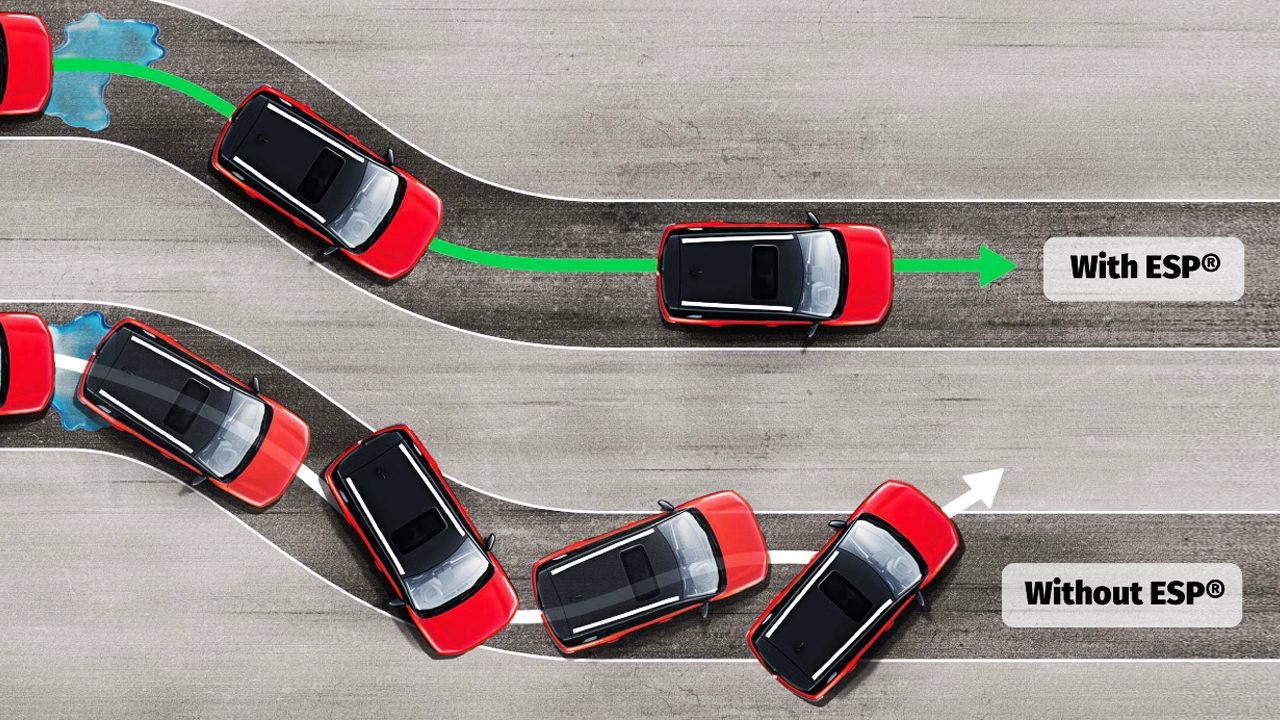Discover the Hidden Hero of Car Safety: Electronic Stability Control Explained
The advanced automotive safety technology known as Electronic Stability Control (ESC) works to increase a car’s stability by identifying and lowering the chance of skidding or losing traction. Since its introduction in the middle of the 1990s, ESC has been a standard feature on many contemporary cars, greatly enhancing road safety. This technology works especially well at preventing accidents brought on by oversteering or understeering, which frequently occur when making abrupt turns or driving on slick surfaces.
How Electronic Stability Control Works
Sensors and Data Processing
The robust onboard computer and sensor network that makeup ESC’s core are its main components. The dynamics of the vehicle are continuously monitored by the system using a variety of sensors. The steering angle sensor, which determines the direction the driver, desires to go, and the wheel speed sensors, which measure the rotational speed of each wheel, are two examples of these sensors. In addition, the lateral acceleration sensor detects the vehicle’s side-to-side movement, and the yaw rate sensor measures the speed at which the automobile rotates around its vertical axis.
The onboard computer interprets the data from these sensors in real time and is frequently combined with the vehicle’s traction control system (TCS) and anti-lock braking system (ABS). It contrasts the vehicle’s actual movement (as shown by the yaw rate and lateral acceleration) with the driver’s desired course (as indicated by the steering angle). The ESC system steps in to adjust the vehicle’s course if a discrepancy is found, suggesting a possible loss of control.
- Audi GT50 Concept: A Loud Reminder of Why Car Enthusiasts Fell in Love With Audi
- Nearly 30% of UK Drivers Believe Car Tax Should Be Based on Mileage — Survey
- Why Planes and Boats Escaped the Luxury Tax But Cars Didn’t
- Australia’s Headlight Confusion: Authorities Warn Drivers After Viral $250 Headlight Rule Goes Wild Online
- 2025 Hyundai Venue Facelift Launched in India – Full Details, Variants, and Price
Mechanisms of Intervention
To assist the driver in maintaining control, the ESC system uses a combination of braking and engine power modifications when it detects instability. One of the main intervention strategies is to selectively brake-specific wheels. For example, the system may apply the brakes to the outer front wheel to counteract the skid and control the vehicle if the automobile starts to oversteer, or the rear wheels start to slip out. On the other hand, the inner rear wheel may get the brake application if the vehicle understates, or if the front wheels lose traction.
The ESC system can aid restore control by reducing engine power in addition to braking. The technology lowers the vehicle’s total speed by briefly applying less throttle, which makes it simpler to control and recover from a skid. These corrections happen in microseconds, frequently even before the driver realizes there is instability.
Benefits of Electronic Stability Control
Enhanced Safety
The main advantage of ESC is its substantial improvement in vehicle safety. ESC can lower the likelihood of deadly single-vehicle crashes by up to 50%, according to numerous studies. It works particularly well to stop rollovers and crashes brought on by a lack of control on snowy or rainy roads. ESC contributes to the reduction of collisions that could cause serious injuries or fatalities by preserving the intended route of travel.
Enhanced confidence while driving
ESC boosts a driver’s confidence, especially in difficult driving circumstances. Drivers can navigate with greater confidence when they know that their car is outfitted with a technology that can help them maintain control during emergency maneuvers or inclement weather. This psychological advantage may result in calmer driving conditions and even safer driving practices.
Integration with Other Safety Systems
Not only does ESC work in concert with other advanced driver assistance systems (ADAS) including electronic brake-force distribution, traction control, and anti-lock braking systems, but it also frequently does so with ease. By integrating these systems, a complete safety net that covers several facets of vehicle control and stability is produced. For example, ESC makes sure the car stays on its intended course while ABS prevents wheel locking during strong braking, offering a comprehensive approach to safety.
With its powerful mechanism for improving vehicle stability and lowering the risk of accidents, Electronic Stability Control (ESC) marks a significant improvement in automobile safety. ESC offers a comprehensive strategy to regulate maintenance in a variety of driving scenarios by interacting smoothly with other vehicle safety systems. Although it cannot replace cautious and focused driving, its capability to step in and adjust the dynamics of the vehicle at crucial times makes it a priceless addition to contemporary cars. ESC systems will only get more advanced as technology develops, which will increase their significance in maintaining road safety.

